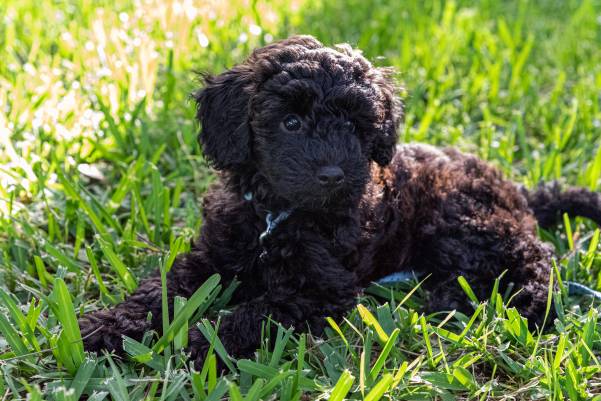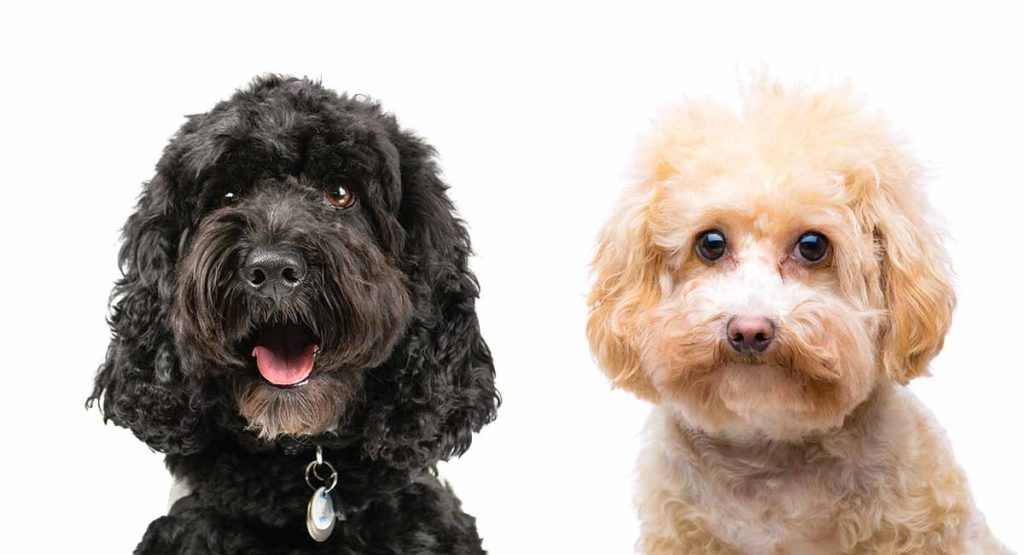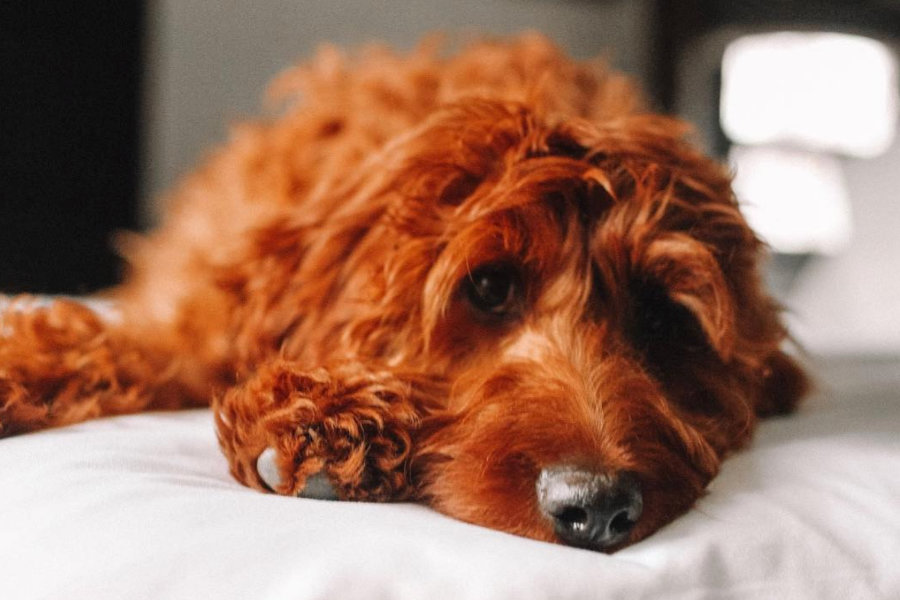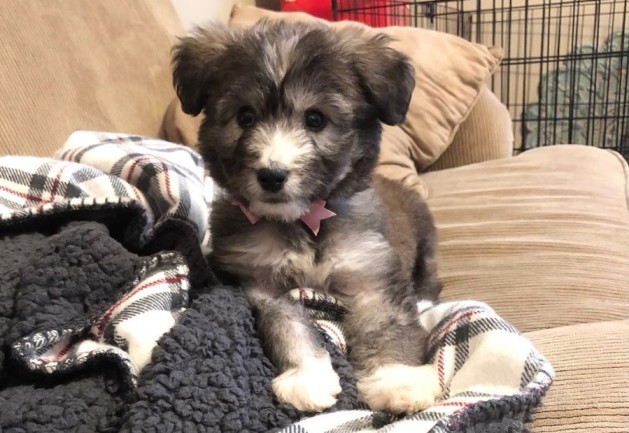Connect with a verified veterinarian in minutes. Licensed vets are available 24/7 to answer your questions. No need to worry about your furry family member.
Are you looking for a large dog breed that’s unique? If so, you may want to consider the Giant Schnoodle! The name of this dog breed is a little funny; however, the dogs are great for families!
We’ve put together some information about the Giant Schnoodle that we hope helps you decide whether this dog is right for you and your family! Let’s get started!
What is a Giant Schnoodle?
While the name of this dog breed sounds like a cartoon character, the Giant Schnoodle is a beautiful, large dog. They’re a hybrid dog breed that results from mixing a purebred Giant Schnauzer with a purebred Poodle. The result is a beautiful, large dog that has a curly coat like his parents!
No one knows much about these hybrid dogs, so we’ll have to take a look at the purebred parents to learn what a Giant Schnoodle can be like. Let’s start with the Giant Schnauzer.
The Giant Schnauzer
The Giant Schnauzer originally came from German, where they were bred to drive and guard cattle. It’s thought the dogs were developed by crossing a standard Schnauzer with a Great Dane. These dogs have a rugged build and impressive appearance. While they may appear stoic, the dogs tend to have a playful nature that surprises many pet parents.
These dogs are big, have tons of energy, and are highly intelligent. Giant Schnauzers are independent thinkers who can cook up some fun! But they do have dominant personalities and will try to take over unless they have a firm pet parent who knows how to manage these beautiful dogs. They respond best to positive reinforcement thinking and are not recommended for inexperienced pet parents.

Review symptoms, medications & behavior to keep your pets healthy with a Vet Online in just minutes.
Ask a Vet Live NowThe Standard Poodle
The other parent of the Giant Schnoodle is the Standard Poodle! While the Standard Poodle was originally bred as a working dog, they make excellent family companions and are great with kids. They are the largest of the three types of Poodles (that also include the miniature and the toy Poodle).
The dogs have a very curly coat that needs a lot of brushing and grooming. The dog’s fur should be trimmed at least every 6 to 8 weeks to keep it in good condition.
Poodles are highly intelligent, athletic dogs that love to play! They’re also eager to please and very trainable. They quickly learn new cues and tricks!
With parents like these, how could the Giant Schnoodle go wrong?
Giant Schnoodles usually stand between 22 to 24 inches tall and weigh between 50 to 90 lbs. They have a life expectancy of 10 to 13 years.
Giant Schnoodle Appearance
Giant Schnoodles are beautiful dogs that are a wonderful combination of the Giant Schnauzer and a Standard Poodle. The dogs have thick, wavy coats that don’t shed and come in different colors, including black, silver, tan, and white mixes.
These dogs are strong and carry themselves with regal dignity. The dogs are highly confident.
Giant Schnoodles have a square snout and a finer, pointier muzzle, making them a beautiful blend of their purebred parents. The dogs’ ears usually fold over and may hang down. And they have dark, bright eyes that show their intelligence and playfulness!
However, because these are hybrid dogs, there’s no specific standard for the breed. That’s because the dogs’ appearance can vary, depending on which parent they take after.
Temperament
Giant Schnoodles are highly intelligent, like both of their parents. You’ll be surprised at how quickly these dogs can learn new things!
However, because these hybrid dogs are so intelligent, they can easily become bored. It’s necessary to continuously offer new games, learning activities, and more to provide the mental stimulation these dogs require.
This last aspect of the dogs can make training somewhat challenging. Pet parents must constantly challenge the dogs, or their fur babies will quickly become bored.
What’s more, Giant Schnoodles are highly sensitive and have strong instincts. They can quickly determine if someone is up to no good. However, they’re also great at being more gentle with someone who is more fragile. The dogs tend to be wary of strangers until the person shows they’re not a threat.
Keep in mind that these dogs love attention and affection; however, they don’t need or demand to be the center of attention like other dog breeds.
Are Giant Schnoodles Good for Families?
Yes, Giant Schnoodles make great family companions! For one thing, they’re able to keep their activity level in line with the person they’re interacting with. They’re not as apt to knock over a young child as other large dogs.
In addition, the dogs are also very protective of kids but are not aggressive in doing so. The Giant Schnoodle doesn’t shrink away from danger and will keep “his” kids out of danger.
Do Giant Schnoodles Get Along with Other Pets?
Yes, they can get along with other pets. However, Giant Schnoodles should be trained and socialized from a young age. This makes them a better fit with other pets in the home.
When it comes to cats and small pets, these dogs are probably pretty safe. However, your small pets and cats may not like being around such a giant that could be a predator! Giant Schnoodles may tend to try and herd or retrieve cats and small pets. So, it’s necessary the dogs are trained to avoid these behaviors.
Food & Diet
Giant Schnoodles need high-quality dog food made for large, active dog breeds. They should eat between 3 3/8 to 4 ¼ cups of dog food daily, divided between two meals.
Exercise
Giant Schnoodles need plenty of daily exercise. They need at least 60 minutes of exercise daily, though more is better. Remember that these dogs need variety and new challenges, or they easily become bored. So, they don’t do well with repetitive activities.
Grooming
Giant Schnoodles are considered to be hypoallergenic dogs because they don’t shed very much. However, there’s no dog that is hypoallergenic. It’s important to keep this in mind if someone in your family has dog allergies. They may or may not be fine with this or any other dog breed.
The dogs should be brushed about once a week, and they also require haircuts from time to time.
Summing It Up
Giant Schnoodles are loving, fun, intelligent companion dogs! These hybrid dogs blend the best of their Giant Schnauzer and Standard Poodle parents! The dogs are best for active families who have time to spend with these large fur babies!
We’re pretty sure if you adopt a Giant Schnauzer, you’ll have a loving, challenging companion for years to come!
Connect with a verified veterinarian in minutes. Licensed vets are available 24/7 to answer your questions. No need to worry about your furry family member.

Julie
Julie is a graduate of the University of North Carolina, Wilmington, where she studied Animal science. Though contrary to the opinion of her parents she was meant to study pharmacy, but she was in love with animals especially cats. Julie currently works in an animal research institute (NGO) in California and loves spending quality time with her little cat. She has the passion for making research about animals, how they survive, their way of life among others and publishes it. Julie is also happily married with two kids.
Review symptoms, medications & behavior to keep your pets healthy with a Vet Online in just minutes.
Ask a Vet Live Now




